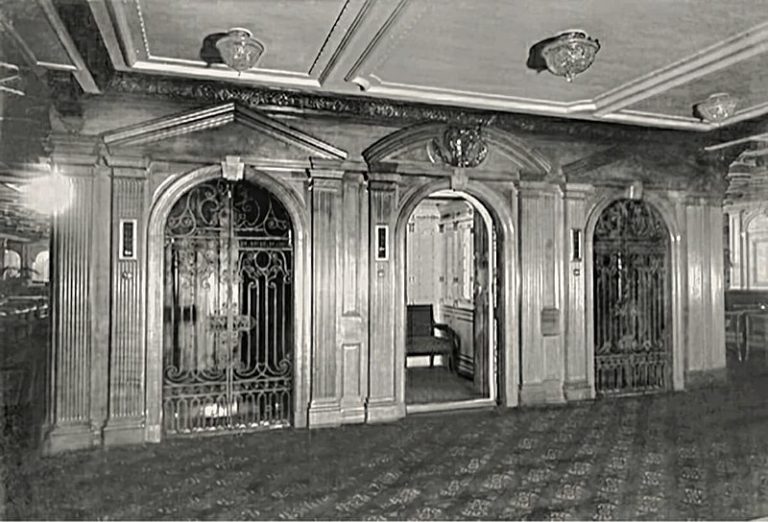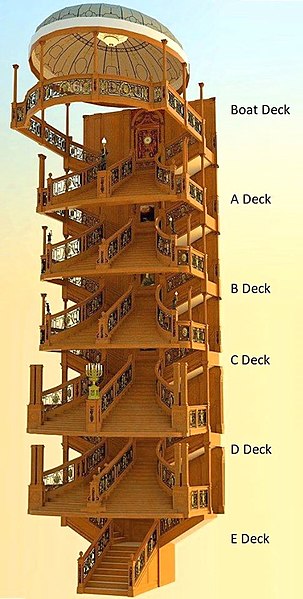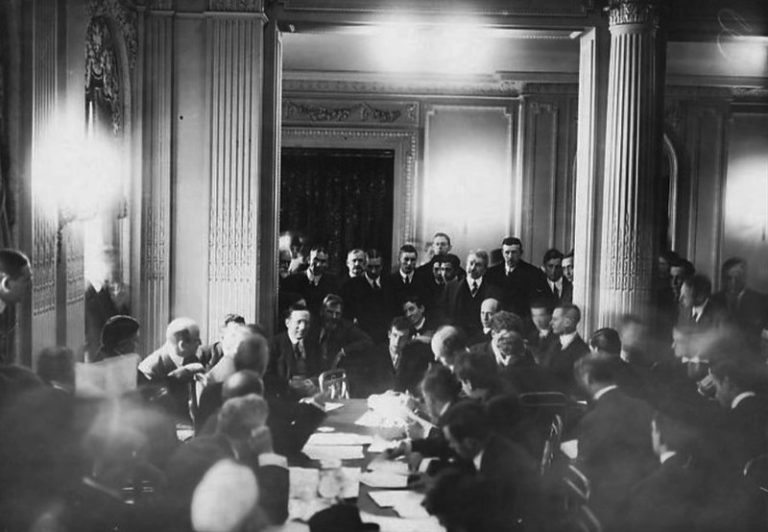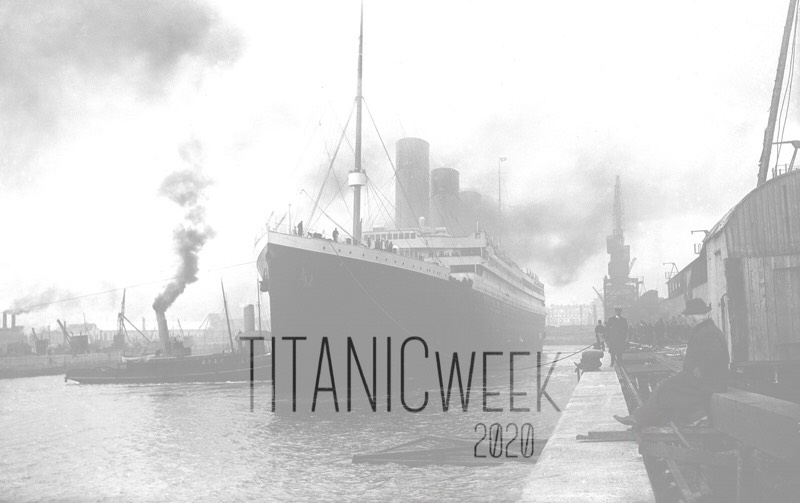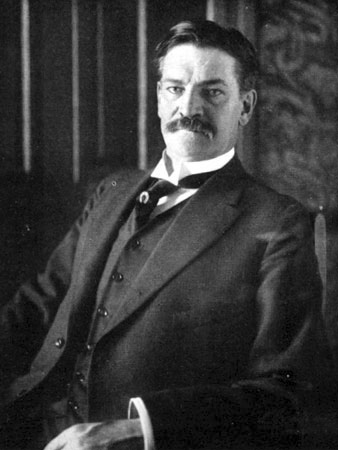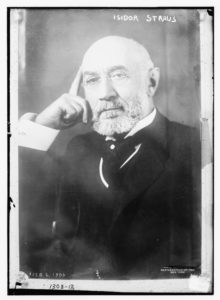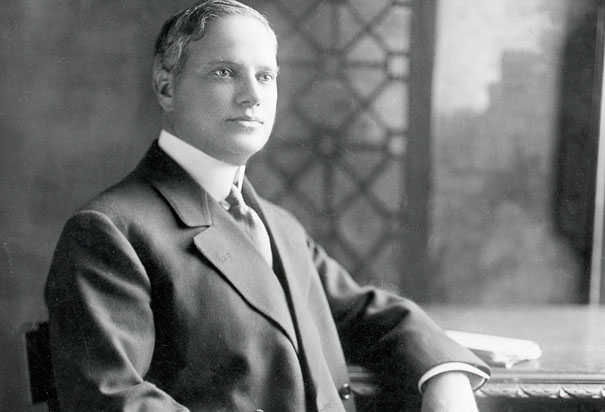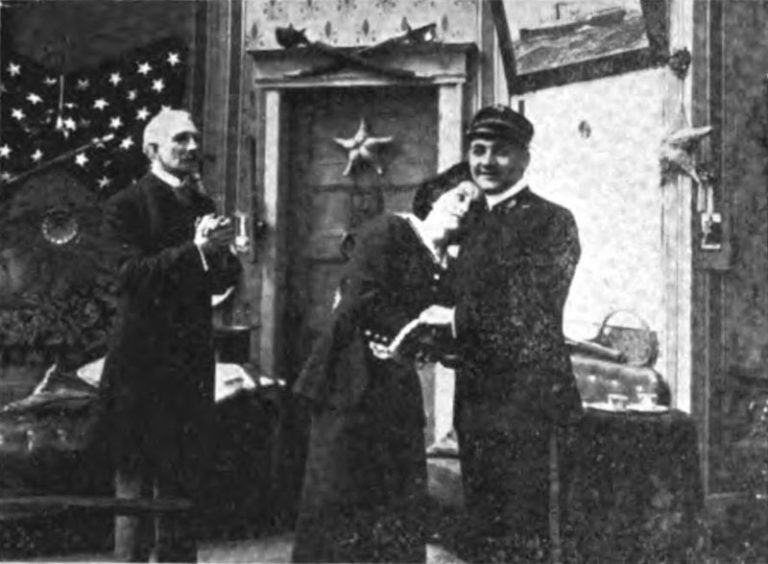"All the Rest Were Dead From Cold": Richard Norris Williams
Richard Norris Williams was a lot of things. The Swiss-born son of American expats. The great-great grandson of Benjamin Franklin. A teenaged tennis wonder.
And a Titanic survivor.

Young Richard Norris Williams, date unknown. Courtesy of the Library of Congress.
Richard, who was 21 years old, was to spend the summer of 1912 on an American tennis tour, and also planned to take the Harvard entrance exam while there. His father, Charles, would accompany him stateside.
They had originally intended to travel to the United States in March of 1912, but Richard had come down with the measles shortly before the trip, so it was postponed until Richard was fully recovered.
Charles and Richard made their way down to Paris from Geneva on the evening of April 8, and arrived in Paris on the morning of the 9th. They spent the afternoon together at the Tennis Club de Paris, and viewed the operetta The Count of Luxembourg that evening.
On the morning of April 10, Richard and Charles were in a rush; they had been directed to the wrong train station, and took a hellish and frantic tax ride through Paris just in time to make the train to Cherbourg.
Richard settled in and enjoyed the pleasant ride to port—and was pretty stoked to see famous tennis player Karl Behr on the same train.

Titanic survivor and tennis champion Karl Behr.
Once officially on board as First-Class passengers, father and son sat down to write and send off a quick letter each.
Father is writing to you just opposite me but as he will not tell you any news I shall just tell you what this boat looks like.
The room in which we are is about as big as the national dining room and it is not the biggest on the boat. We have beautiful room nearly as big as my work room in Geneva.
Of course there is room after room—smoking-reading-lounge-palm room; you can imagine that there are many other rooms but as we have only been on board about 10 minutes, really not more, we have not been able to see everything.
Father says I must stop as the letter must go.
Letter written by Richard Norris Williams, as cited in "On Board RMS Titanic: Memories of the Maiden Voyage," by George Behe, 2012.
Richard and Charles were situated in staterooms on C Deck. On the night of the collision, Richard urgently threw on a fur coat and he and his father promptly left their quarters and found chaos mounting in the hallway.
Richard soon found himself involved in an incident that later inspired a particular cinematic scene, which was documented by fellow First-Class passenger Martha Stephenson.
According to Martha, she had been “awakened by a terrible jar with ripping and cutting noise which last a few moments,” and that she and her sister Elizabeth had exited their cabin to investigate.
Before Elizabeth returned I decided to get dressed as I had seen a gentleman in one of the rooms opposite pull his shoes in from the passageway. When she came in she told of many people outside half-dressed, one woman having a thin white pigtail down her back and a feather hat; also that some man was fastened in his inside room unable to open his door. He was much worried, calling for help, and young Williams put his shoulder to the panels and broke it in. The steward was most indignant and threatened to have him arrested for defacing the beautiful ship.
As cited in "On Board RMS Titanic: Memories of the Maiden Voyage," by George Behe, 2012.
From there, Charles and Richard wandered both the Boat and A Deck, where they inspected the daily map of the ship’s location on the sea; they eventually took shelter from the cold in the First-Class gymnasium and took seats on the stationary bicycles.

The First-Class Gymnasium. Stationary bikes are visible in the right-sided foreground. Taken by Robert John Welch for Harland & Wolff.
At one point around midnight, they ended up at the bar, where Charles requested that his silver flask be refilled. The steward replied that the bar had, unfortunately, just been closed up for the night.
Charles gave the flask to Richard, telling him that it might help him keep warm in the cold night.
As the ship submerged, Richard and Charles had no choice but to dive into the ocean.
And that was how Richard watched his father die.
We stood on the deck watching the lifeboats of the Titanic being filled and lowered into the water, said Williams. "The water was almost up to our waists and the ship was about at her last. Suddenly one of the great funnels fell. I sprang, endeavoring to pull my father with me. The funnel was swept overboard and my fathers [sic] body went with it.
Richard addressed this moment in more detail in an account that was published the May 11, 1997, edition of “Main Line Life.”
'The ship seemed to give a slight lurch; I turned towards the bow. I saw nothing but water with just a mast sticking out of it. I don’t remember the shock of the cold water, I only remember thinking “suction” and my efforts to swim in the direction of the starboard rail to get away from the ship. Before I had swam more than ten feet I felt the deck come up under me and I found we were high and dry. My father was not more than 12 or 15 feet from me…'
“Jump,” Norris Williams yelled at his father.
'He started towards me just as I saw one of the four great funnels come crashing down on top of him. Just for one instant I stood there transfixed – not because it had only missed me by a few feet … curiously enough not because it had killed my father for whom I had a far more than normal feeling of love and attachment; but there I was transfixed wondering at the enormous size of this funnel, still belching smoke. It seemed to me that two cars could have been driven through it side by side.'
And at some point, when Richard broke the surface of the water, he was face-to-gasping-face with something unexpected in the ocean: a French bulldog in a panic and paddling.
This dog, named Gamin de Pycombe, was owned by First-Class passenger Robert Daniel. Since Mr. Daniel attested to locking his stateroom with his dog still inside, it remains a mystery who let Gamin free, and how the little dog came to where he was--meaning that in the course of the sinking, he likely had gotten all the way to Boat Deck from down below.

French bulldog, circa 1915.
In the memoir Richard later wrote for privately for his family, he described the sight of Titanic as she foundered.
I turned towards the ship. It was an extraordinary sight. As the bow went under, the stern lifted higher and higher into the air, then pivoted and swung slowly over my head. Had it come down then I would have been crushed. Looking straight up I saw the three propellers and the rudder distinctly outlined against the clear sky. She slid into the ocean. No suction. No noise.
The wave created by the falling funnel seems to have washed Richard toward Collapsible Lifeboat A, which had washed off the deck before its canvas sides could be pulled up and, though it was taking on water, was still barely afloat.
So Richard took a place on Collapsible A.
He wrote as much in his correspondence to fellow survivor Colonel Archibald Gracie, who was fervently curating survivor accounts in the months after the sinking.
I was not under water very long, and as soon as I came to the top I threw off the big fur coat. I also threw off my shoes. About twenty yards away I saw something floating. I swan to it and found it to be a collapsible boat. I hung on to it and after a while got aboard and stood up in the middle of it. The water was up to my waist.
About thirty of us clung to it. When officer Lowe's boat picked us up eleven of us were still alive; all the rest were dead from cold.
Richard also attested to a man behind him on the lifeboat, who was so weak that he pleaded to put his arms around Richard’s neck to keep from falling over.
Richard obliged and after feeling the man’s arms tense and tighten against his throat, Richard felt the man's grip relax, followed by a cold release as he died at Richard's back and slid down into the water.
Collapsible A was disregarded and abandoned by Fifth Officer Harold Lowe when he rescued its few and diminishing survivors, including Richard Norris Williams; the lifeboat floated off and was unaccounted for.
Until it was happened upon one month later by the SS Oceanic, on May 13, 1912.
There were three corpses still within.

Collapsible A when it was discovered by the SS Oceanic on May 13, 1912.
Once on board Carpathia, Richard refused to leave the deck until the last boat had been unloaded, hoping in vain for the safety of his father, Charles.
He then found his way below deck and tried to get warm by settling into a spot between an oven and a galley. A doctor from Carpathia stumbled upon him and “cheerfully advised,” per Richard, that he would need to amputate both his legs in order to survive. In order to prevent gangrene, the doctor said, because Richard had spent hours standing waist-deep in arctic water.
Richard utterly refused. He said, “I’m going to need these legs."
And so, every two hours, round the clock, Richard roused himself and walked the decks of the Carpathia to restore his circulation. It's reported that for the rest of his life, Richard would only wear pants to hide the permanent discoloration of both his legs.
Later that same year, Richard Norris Williams won his first US Championship in mixed doubles, and went on to win many more championships in 1913, 1914, and 1916.
He also participated in the Davis Cup with none other than Karl Behr, who had also managed to survive Titanic.
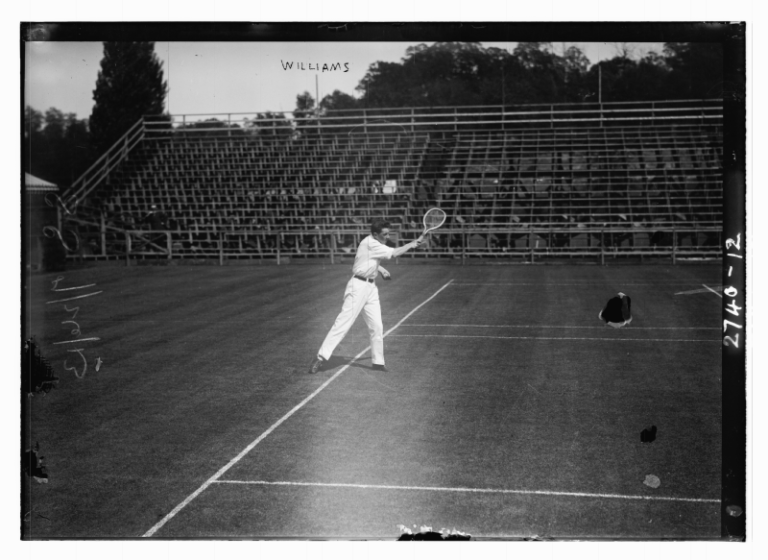
Richard Norris Williams practicing for the Davis Cup, 1913. Courtesy of the Library of Congress.
Richard enlisted in the US Army to serve in the First World War, and was awarded both the Croix de Guerre and Legion of Honor awards. He was inducted into the Tennis Hall of Fame in 1957.
He was described by his grandson, Quincy, as “a modest man who didn’t like to talk about himself… and loved to garden.”
Richard Norris Williams died in 1968, at the age of 77.

Richard Norris Williams. As published in "Methods and Players of Modern Lawn Tennis," 1915.
Quincy now owns the silver flask that his great-grandfather, Charles Williams, gave to Richard during the sinking.
SOURCE MATERIAL
Behe, George. "On Board RMS Titanic: Memories of the Maiden Voyage." The History Press, 2012.
https://www.encyclopedia-titanica.org/titanic-survivor/richard-norris-williams.html
https://www.williammurdoch.net/mystery02_witness_williams_r.html
https://www.encyclopedia-titanica.org/saw-funnel-sweep-father-overboard.html




